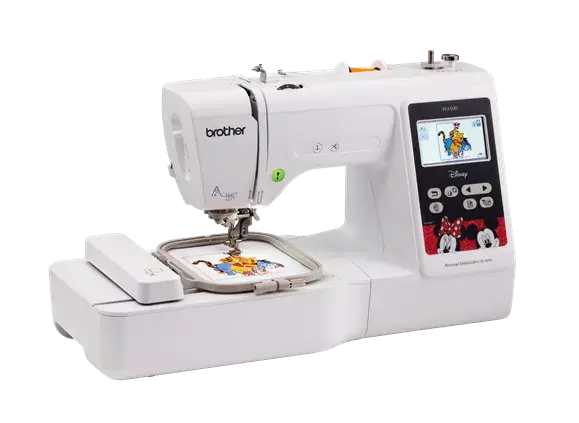Mastering the Satin Stitch in Machine Embroidery: A Comprehensive Guide
Introduction: Machine embroidery offers a world of creative possibilities, and among its various techniques, the satin stitch stands out as a versatile and visually appealing option. In this post, we’ll explore what satin stitch is, how it’s used in machine embroidery, and why it’s a favorite among both novice and experienced embroiderers.
What is a Satin Stitch? A satin stitch is a series of parallel stitches laid closely together to create a smooth, glossy surface that resembles satin fabric. In machine embroidery, these stitches are typically longer than standard fill stitches and are arranged to cover an area completely with a lustrous sheen.
Characteristics of Satin Stitch:
- Appearance: Satin stitches have a smooth, shiny finish that catches the light beautifully.
- Density: The stitches are placed close together, creating a solid coverage of the fabric.
- Direction: Satin stitches usually run in a single direction across a shape.
- Length: These stitches are longer than typical fill stitches, often ranging from 3-8mm in length.
How Machine Embroidery Creates Satin Stitch: In machine embroidery, the satin stitch is achieved through precise programming. The machine lays down parallel lines of stitching, with each stitch reaching from one side of the shape to the other. The needle penetrates the fabric at the edges of the design, creating a zigzag pattern on the underside of the fabric.
Common Uses of Satin Stitch:
- Lettering: Satin stitch is excellent for creating bold, legible text in embroidery designs.
- Borders: It’s often used to outline shapes or create frames around designs.
- Small to medium-sized elements: Satin stitch works well for filling in elements that are not too large.
- Badges and patches: The smooth finish of satin stitch makes it ideal for creating professional-looking emblems.
Advantages of Satin Stitch:
- Visual appeal: The glossy finish adds a touch of elegance to designs.
- Versatility: It can be used for both thin lines and wider areas.
- Texture: Satin stitch creates a raised effect, adding dimension to embroidery.
- Color vibrancy: The dense stitching allows colors to appear rich and saturated.
Challenges and Considerations:
- Size limitations: Satin stitch is not suitable for very large areas as long stitches can become loose.
- Fabric choice: It works best on stable fabrics that can support the dense stitching.
- Underlay: Proper underlay stitching is crucial to prevent puckering and provide stability.
- Stitch direction: The direction of the stitches can affect the overall look and should be considered in the design process.
Tips for Successful Satin Stitch Embroidery:
- Use appropriate stabilizers to prevent distortion.
- Adjust stitch density based on the fabric and thread weight.
- Consider using shorter stitch lengths for curves to achieve smoother edges.
- Experiment with different thread types to achieve various effects.
Conclusion: The satin stitch is a fundamental technique in machine embroidery that offers both functionality and aesthetic appeal. By understanding its characteristics and best practices, you can incorporate this beautiful stitch into your embroidery projects with confidence. Whether you’re creating custom apparel, home décor items, or intricate art pieces, mastering the satin stitch will elevate your machine embroidery skills and open up new creative possibilities.
Related Posts
Discover relevant articles, tutorials, and tips to improve your skills and explore new techniques.
Stay inspired and connected to our embroidery community.






